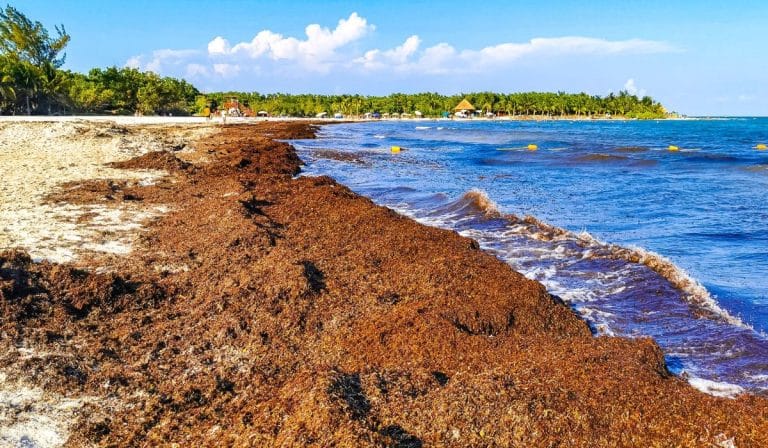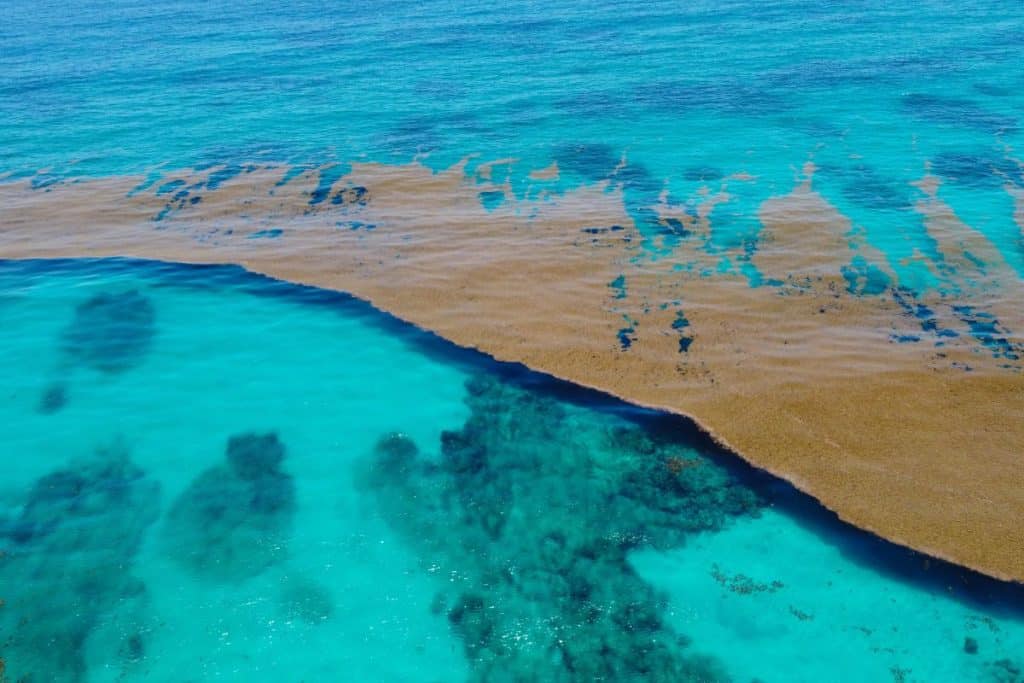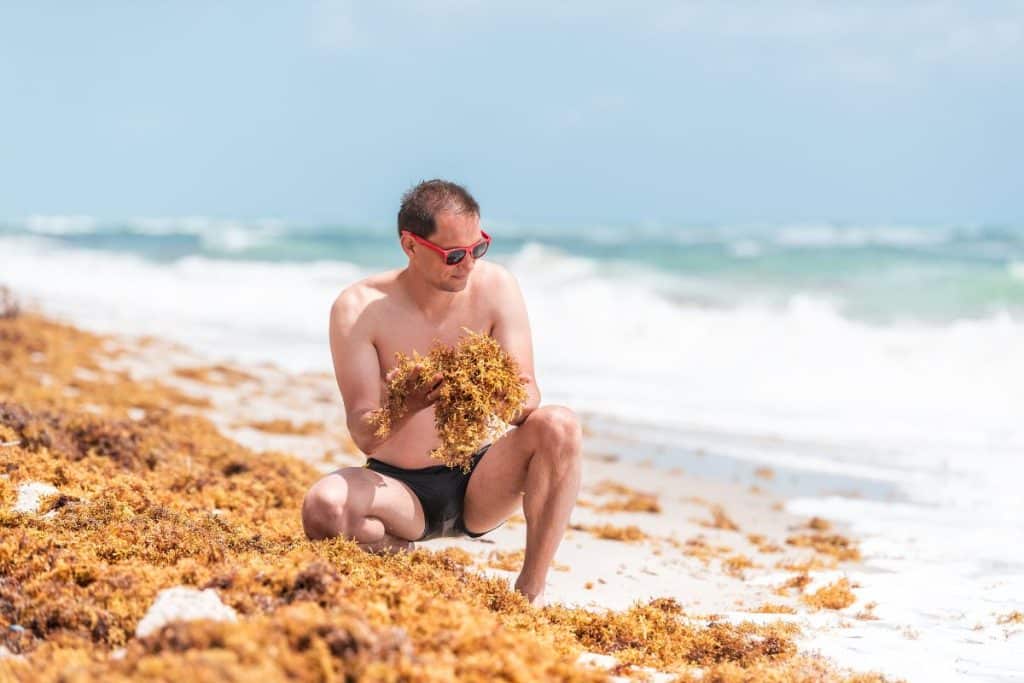According to the Sargassum Citizen Observatory, an increase in this algae is predicted in the first months of 2024, although the extent of the bloom is uncertain.
In Cancun, the algae is present in small quantities on most beaches. Of the 138 monitored beaches in Quintana Roo, 112 have low levels and 9 have moderate levels.
The current situation of sargassum distribution in Quintana Roo is mixed, with a tendency towards low concentration. Until yesterday, only the coasts of Holbox, Isla Contoy, Costa Mujeres, Isla Mujeres and Chetumal were free of algae.
Eleven of the 17 tourist destinations that make up the region report a low presence of the macroalgae: Cancún, Riviera Cancún, Puerto Morelos, Playa del Carmen, Riviera Maya, Cozumel, Akumal, Tulum. Sian Ka’an, Punta Allen and Mahahual.
Of the 138 beaches observed in Quintana Roo, 12.3 % are free of algae; 81.2 % have a low concentration, and 6.5 % of the beaches report moderate sargassum.
In Cancun, all 23 beaches observed have a low presence of sargassum, as the surrounding hotels keep their beaches clean.
Suggested: Beaches Near Cancun That Don’t Get Affected By Sargassum
According to the University of South Florida, there will be an increase in the abundance and distribution of sargassum in Quintana Roo in the first months of 2024, but the long-term extent of the bloom is uncertain.
It is important to note that sargassum increases from April to May. Although the arrival of the algae is intermittent because it depends on various weather conditions, if it is moderate, the cleaning teams will soon have it under control.
Scientifically speaking, sargassum is a brown planktonic macroalgae. There are several species, but the variety we are talking about is characterized by having gas-filled vesicles that remain buoyant. It has a hard texture, is quite robust and has a flexible body. This is why it survives the strong currents of the Gulf of Mexico, which drag it to the Caribbean Sea and then to the coasts of Quintana Roo.
Agencies specializing in monitoring Sargassum are observing a “spot” in the Caribbean Sea that, if its trajectory continues, could reach the coast of Quintana Roo before the first quarter of the year, even if current weather conditions slow it down.
Since December 2024, the Sargassum traffic light in Quintana Roo has been in the green phase, which means that the state’s beaches are only slightly affected by the seaweed, but it is expected that the state will be affected by the arrival of a stain of significant magnitude.
Check this FB group for the latest updates from the area: Sargassum Seaweed Updates (Cancun, PDC, Tulum)
What is sargassum seaweed and why is it happening?
Sargassum seaweed is a type of brown algae found floating in the ocean. It is distinctive for its leafy fronds and small, berry-like structures that help it float. Sargassum is not inherently harmful and plays a vital role in ocean ecosystems, providing habitat and food for various marine species.
The recent increase in sargassum, particularly in the Caribbean and along the Gulf of Mexico, is believed to be linked to several factors. Nutrient enrichment from agricultural runoff and wastewater discharge is a significant contributor, as these nutrients fuel the growth of algae. Climate change, altering ocean currents and temperatures, may also be facilitating more extensive and more frequent sargassum blooms. Another factor is the change in ocean chemistry, which could be altering the conditions in which sargassum thrives.



